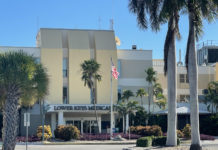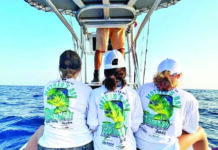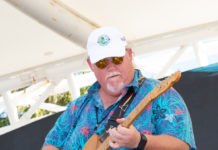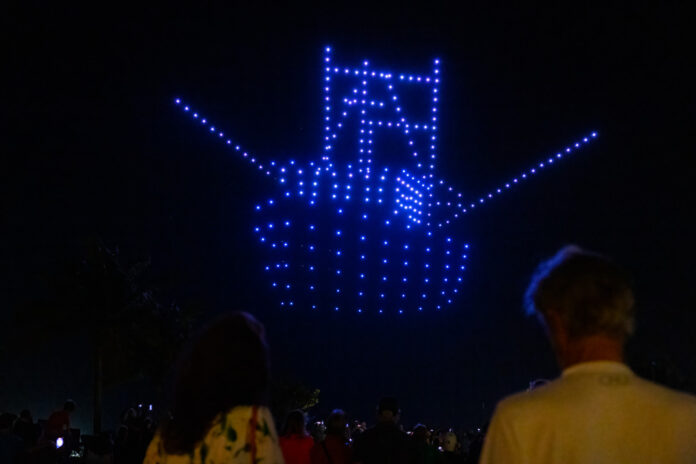
“A train – wait, it’s moving! Oh, it’s Flagler’s!”
“Yes! A conch shell!”
On March 25, the skies above Key West’s historic Truman Waterfront dazzled with a drone “fireworks” display to end a night of fun for the Florida Keys’ bicentennial celebration. Some 250 synchronized drones illuminated the night with pictures from this little island chain’s storied history. It was a fitting tribute by and to the Florida Keys – a paradise worth protecting.
The drones moved in unison into different formations, much like a marching band does at halftime shows. Pre-programmed flight commands resulted in animated, large-scale, color-changing displays hundreds of feet in the air. The drones were programmed to emit specific color LEDs for specified durations. The impressive show, while itself silent, synched to tropical music and made for an extra special – and eco-conscious – celebration.
In comparison to traditional fireworks, drone displays:
- Don’t come with loud bangs and flashes that scare dogs and/or harm babies and the hearing-sensitive.
- Create zero air pollution and don’t leave a toxic chemical fog residual.
- Leave no falling debris or plastic pollution that could end up in our waterways and harm our wildlife.
- Use electric batteries instead of greenhouse gasses and chemicals to power them.
- Are reusable and more affordable ways to celebrate.
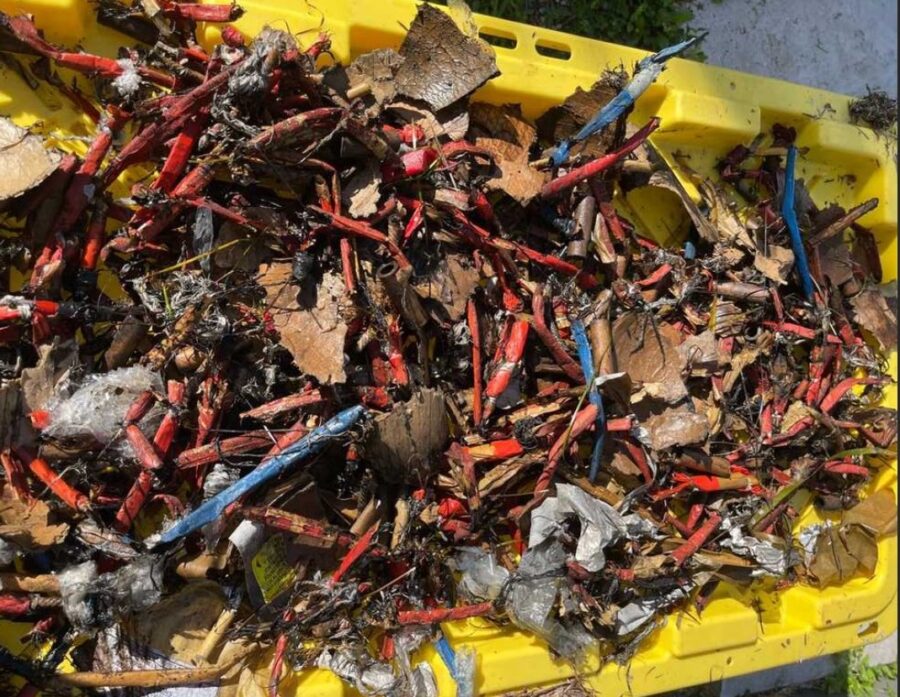
Joanne Delaney, NOAA’s resource protection and permit coordinator, warned of some of the other concerns with traditional fireworks displays. “Permits issued by FKNMS emphasize the need to conduct such activities away from sensitive wildlife habitats, carefully contain and dispose of plastics and wrappers from the pyrotechnics, and clean up any debris on land or in the water after events conclude. These efforts are important to ensure that debris doesn’t become entangled or embedded in sanctuary habitats or impact immobile organisms, and to maintain the aesthetic qualities of the sanctuary.”
Aside from sanctuary permits, traditional fireworks also require notice and permission from local fire marshals, the U.S. Coast Guard, and other municipal and federal entities. Drone fireworks – or any drone – within five miles of the Key West airport would require clearance from the Federal Aviation Administration. Drones are banned in restricted military airspace, such as the airspace near and around Boca Chica Field.
The procedures are grounded in real concerns. On New Year’s Day, Keys locals paddleboarding to Pelican Key quickly shifted their trip into a “garbage haul” of fireworks debris. Appalled guests from a nearby resort had been told that their fireworks were biodegradable; and yet, hard plastics, metal coils and plastic wrappers littered sanctuary waters from their revelries. These could easily damage corals, choke birds and fish and entangle manatees, sea turtles and dolphins.
One disheartened local commented, “Maybe it’s time for a change and to protect our fragile ecosystem that we all enjoy and live off down here. Maybe we could switch to a drone show … good for environment and pets.”With this latest, monumental celebration of “200 Years of Paradise,” perhaps we’re moving that way already. As one young conch screamed out, “This is the best thing ever!”
